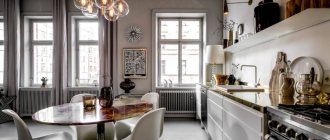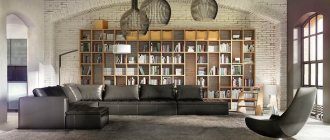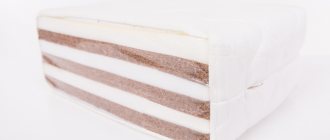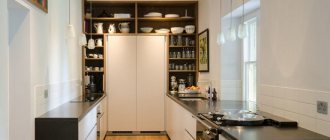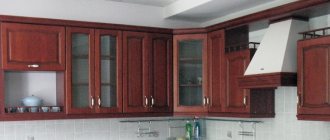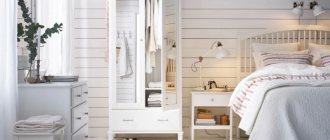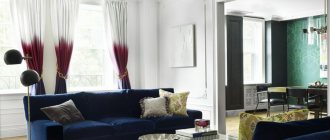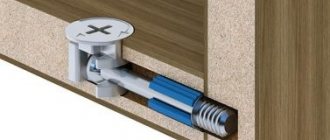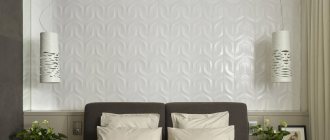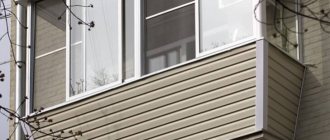The retractable mechanism is usually perceived by us as an uninteresting, narrowly professional detail, but only as long as we are unaware of the new level of comfort available with a well-chosen retractable system.
And the prospects are quite tempting, because developers of innovative solutions in the field of furniture fittings offer nothing less than: assistance in the optimal organization of work processes, rational use of usable space, and more comfortable use of furniture.
Guiding systems
To install drawers that slide out, you will first need guide systems. Fasteners are usually supplied with them.
You can easily order drawer guides with different load-bearing capacities from specialized stores. There are inexpensive mechanisms designed for loads of up to 10 kg. There are more durable ones that work properly with a load of up to 25 kg. For cabinet cabinet modules, models with a load-bearing capacity of up to 200 kg and more are available.
In terms of size, the choice is also large: from compact systems (150–200 mm) to those that extend to 803.5 mm, and this is not the limit.
There are mechanisms compatible with the automatic opening system (Push) and reverse dampers.
Roller
Roller systems are simple in design and installation. They are a set of metal corner strips with rollers - 4 pieces for one module. Two are attached to the body, two are attached to the box on the left and right sides, respectively. High-strength plastic rollers are responsible for sliding one bar over another.
The products are provided with through holes so that they can be securely attached to the walls of the case or drawer with screws.
Inexpensive. With an installation length of 300 mm and a load-bearing capacity of 25 kg, they cost between 80 and 110 rubles (a set of two guides).
Does not cause installation problems. The main thing is to apply the markings correctly, at the same level, and secure them firmly.
But they have significant disadvantages:
- Impossibility of full extension;
- Unreliability under increased loads;
- Noise during operation.
Systems in which balls are responsible for module ejection and return stroke do not have these shortcomings.
Ball
They are also called telescopic. Consist of several planks. When we pull the drawer towards us by the handle, one section slides out from the other. Between them there are metal balls that promote sliding and easy extension.
More expensive than roller ones, but they allow full extension. They benefit from reliability, wear resistance, and work quietly.
You can buy this type of drawer guides with a load-bearing capacity of more than 250 kg and a length of 200 – 1000 mm. And additional fittings for them: open position clamps, Push system, shock absorbers.
Mechanism design
Before buying drawers for the kitchen, you should decide on the mechanism that will drive the furniture. Drawers can be pulled out using rollers or telescopically.
The roller mechanism is an iron guide along which plastic wheels roll. This system is suitable for a closet in which something light will be stored. The rollers cannot withstand heavy loads and break.
The telescopic system is suitable for storing heavy pots or vegetables in drawers. In it, a metal rod slides along a metal guide. This fastening system is more expensive than a roller fastening system, but lasts longer and is more reliable.
Metaboxes and tandemboxes
Modernized roller guides - metaboxes. Includes metal walls. The container and the façade part are attached to them.
Tandemboxes are ball systems with sidewalls. Aluminum or durable steel, with a protective and decorative coating.
“Tandems” are fully retractable, adjustable, and equipped with latches and smooth automatic return devices.
Hafele Rus manager will contact you promptly
The installation of drawers is planned when drawing up cabinet drawings. In some standard models they can be purchased as options upon request. But more often this applies to cabinets 2 meters wide or more with three doors. What should the owner of a small wardrobe do?
If there are no drawers in the purchased cabinet or there is a need for them during operation, build in an additional unit yourself. To do this, calculate the dimensions and select components. We'll tell you how to add drawers to your linen storage cabinet with your own hands.
Kitchen without wall cabinets
Kitchens usually have wall cabinets in addition to lower drawers. They often store tableware and glass, and sometimes a dish drainer is placed in the cabinet.
If the dimensions of your kitchen allow it, you can get rid of them. Then you will have a modern kitchen without top drawers. In this case, you can place decorative elements, paintings and a shelf with beautiful little things above the desktop.
In order to compensate for the lack of wall cabinets, you will need to install additional bottom drawers. For example, install a kitchen island on which an additional work surface and sink will be located. And inside the island you can install spacious storage drawers.
Location of drawers in the closet
The main advantage of assembling drawers in a ready-made cabinet is that you do not need to disassemble things, take it to a service center or call a specialist to your home for reconstruction. It's easy to do it yourself.
Selecting the location of the boxes:
- Separately from each other.
- In a module that is built into the wardrobe.
The disadvantage of the first type of arrangement is the difficulty of adjusting the guides after several years of use. When using the cabinet over time, the walls may bend. This leads to curvature of the compartment geometry and makes it difficult for the box to move freely along the guides.
The block-modular option is better because:
- assembled outside the cabinet, makes work easier during installation;
- Less dust is generated when built into a wardrobe, so you don’t have to put things away.
It is advisable to install the module no higher than 1 meter from the floor. If there is no space in a compartment with shelving shelves, then place it in a niche with a barbell under the hangers. When determining the location, remember that the door side hinges should not interfere with the extension of the box. Therefore, consider the distance between them. And in wardrobes, do not place the block-modular structure close to the intersection of the sliding doors.
How to choose the right cabinets
When choosing cabinets and drawers for the kitchen, you need to remember a few rules:
- Pre-plan the location of the elements of the kitchen unit yourself or with a specialist in the store. All doors and drawers must open and not interfere with each other.
- Decide in which boxes you will store what. For example, a small drawer under the tabletop on casters is suitable for cutlery, and a large drawer with a telescopic system or a floor drawer with holes for ventilation is suitable for storing root vegetables.
- When choosing cabinets with drawers, be it a kitchen cabinet with drawers or a wall cabinet with shelves, make sure that the hangers and fastenings are made of stainless steel with a thickness of at least 1 mm. It is the fittings that become unusable first, especially those made of poor quality metal.
Calculation of the lengths of walls and drawer fronts (block-modular version)
Before you start making parts, take measurements of the finished cabinet and make calculations based on them (see the instructions for an example). To eliminate errors in the lengths and heights of retractable boxes, calculate them separately.
Instructions for calculating the lengths of walls and facades
As a basis, we will take the design of a wardrobe niche with dimensions (VShG): 400 mm x 500 mm x 500 mm. Calculation steps for manufacturing a block of drawers:
- Make the upper and lower parts of the compartment 500 mm in length and width, in the amount of 2 pieces.
- Calculate the length of the walls at 368 mm. From the total height, subtract the thickness of two chipboard sheets. Make calculations using the formula: 400 mm - (16 mm x 2 pieces = 32 cm).
- Take 480 mm for the width of the module sides (allocate 20 mm for the façade).
Knowing the dimensions of the compartment walls, make boxes.
- Take 450 mm for the length of the side of the box.
- Make the rear panel 410 mm. Calculate this size using the formula for adding the thicknesses of all chipboards and the gaps for the guides: 500 mm - (16 mm x 4 pcs. + 13 mm x 2 pcs.). 13 mm is the gap for installing guides on both sides.
- Subtract 4 mm from the dimensions along the outer perimeter for the gaps: 500 mm - (2 mm x 2 pcs) = 496 mm.
- Make the bottom smaller than the box by 1 mm on each side.
Important! The bottom of the drawer can be made of fiberboard, but if heavy items will be stored in it, plywood should be used.
Calculation of the height of drawer parts
After determining the lengths of the module walls and drawers, calculate the height of the latter.
- Make the minimum gap between the fronts of two drawers 30 mm. This distance will allow your fingers not to touch the next shelf when opening, if the front is without handles. If they are provided, then reduce the gaps to 3 mm.
- Make the side and back walls the same height. The height of the drawers depends on how many of them there will be in the compartment. For example, for the dimensions of this module, make two drawers with walls from 80 mm to 150 mm.
Important! When all the parts are ready and fastened, roll up the end ends with melamine edge.
Disadvantages of the design
The main disadvantage of drawers is the rapid wear of the fittings. Due to the complexity of the design, retractable systems require a large number of metal parts. Even if you do not skimp and order high-quality fittings, over time its parts will begin to fail.
There is a way out of this situation: close the cabinets carefully, if necessary, lubricate parts of the structure with machine oil, tighten loose bolts and, if necessary, replace spare parts.
Calculation of drawers (built-in version)
As an example of calculation, let's take a cabinet niche with dimensions W*D*H=600*550*784mm. The calculation is made for internal boxes of the same size in the amount of 4 pieces.
Facade dimensions
The minimum allowable gap between drawer fronts is 2mm. You need to retreat another 2mm from the top and bottom shelves, between which the drawers are located. Thus, the maximum height of the facade is:
Vn – niche height;
Kf – number of facades.
In our case we get:
It is not advisable to make drawer fronts larger than this value, since they can cling to each other.
Side wall height
If the bottom of the box is overhead, and 3mm thick HDF will be used as the material, then the minimum distance from the bottom of the facade should be 5mm (3mm on HDF+2mm of gap).
If the bottom of the drawer is inserted into grooves, or is made of laminated chipboard, then the minimum distance from the bottom of the facade to the bottom of the sidewall can be reduced to 2 mm.
The minimum distance from the top of the facade is 2mm, but usually it is made a little more, from 10mm. This does not play a significant role in storing things, but it allows you to reduce the weight of the box and, accordingly, the load on the guides, which increases their service life. In addition, the height of the sidewalls and back wall can be varied to obtain optimal cutting.
Thus, the maximum height of the side of the drawer is:
Vb=Vf-7 – for an overhead bottom made of LDVP;
Vb=Vf-4 – for the inner bottom made of laminated chipboard or LDVP.
Depth
The depth of the inner drawer should not exceed the depth of the niche, that is, in our case, 550 mm. However, for ease of closing, it is customary to leave a gap between the sides and the back wall, the size of which varies as desired. The thickness of the façade should also be taken into account.
Thus, the depth of the side of the drawer is:
Gn – niche depth;
Tf – thickness of laminated chipboard facade;
Гз – gap depth.
Let's calculate the depth of the sidewall for our case:
REFERENCE. Quite often, especially in serial products, the depth of the cabinet side is chosen based on the length of the guides. This allows the drawer to be pulled out completely and provides easy access to its contents.
Rear wall dimensions
The height of the back wall is usually equal to the height of the sides of the box:
Kitchen table
Kitchen drawers can be built into not only cabinets and wall cabinets. A small drawer can even be provided under the dining table.
Due to the fact that there should be enough space under the table so as not to interfere with the knees of the person sitting at it, you can build a drawer under the dining table to store spoons and forks.
A table with drawers for the kitchen can also look like two cabinets with pull-out parts on the sides, between which there is a dining area. This option is suitable for a large kitchen. This table can be placed in the center of the room. During lunch they will eat at his place, and at other times they will cook.
Drawer guides
- Roller. This is the cheapest type. Its disadvantages lie in the incomplete removal of most of the box. They also make loud noises when leaving or entering.
- Ball. This is a telescopic type of guide. There are two subtypes: regular and enhanced. The height of regular ones is 35 mm (for light laundry: socks, belts, etc.), reinforced ones are 45 mm (for heavy laundry).
Marking for guides
The thickness of the guides is the same and equal to 13 mm. Select the length according to the side wall, a multiple of 50 mm in the smaller direction. For example, if the width of the above compartment is 480 mm, then select the guides at 450 mm. Install them after assembling the box and bottom.
Attach roller-type guides to the bottom of the drawer. And install telescopic ones in the center of the sidewalls.
Mark the location for the guides on the inside of the module walls, and on the drawers - on the outside.
Main characteristics
In most cases, retractable systems are installed in kitchens. Drawers are built into wall cabinets, cabinets, under the sink and even in sofas. They allow you to significantly save space and hide from view what guests should not see. There are also boxes with a hinged lid. Such systems often look like a soft corner for the kitchen with drawers.
Drawer handles
Furniture handles for a closet can be made in three ways:
- Cut-out. Oval cutout at the top of the drawer front. Cover the cut with melamine edge.
- Railing. For facades longer than 450 mm. Attach them with screws to the facade. When determining the length of the drawer walls and the front, take into account the distance between the front and the handle so that it does not stick out and allows the cabinet door to close.
- Mortise. Save useful cabinet space. Installation: make a cutout in the facade with a milling cutter. Insert the handle into the groove and secure it from the inside.
Last but not least, we should mention the castles. To lock the drawer, use a furniture lock. It is more reliable than overhead and looks aesthetically pleasing.
Instructions for manufacturing a vertical retractable module:
- Determine the dimensions based on the interior niche of the cabinet. The height of the structure can be from 1 to 1.5 meters. Depth up to 50 cm. Now you can attach drawers to it.
- When making boxes, take into account the dimensions of the chipboard board, so make the length of one box less than the entire finished structure by 3.2 cm (1.6 cm on each side). The shelf width varies from 30 to 50 cm.
- Screw the wheels to the bottom.
- Make the back wall and sides. Drill grooves for future shelves. At the same time, fix the wheels so that they do not move while working on the walls.
- Attach the shelves to the structure using nails or use two timbers on either side of the structure on which to install the shelves. Now take it off, clean it from dust and put it back on.
Attention! To make the drawers and cabinet, laminated chipboard was used as a base, but such structures can be made from wood, MDF or plywood.
Sofa
If you plan to place upholstered furniture in the kitchen, you can also store kitchen utensils under the seats. A kitchen sofa with a drawer can be straight or corner. In soft corners, the seat-lid most often rises, and underneath there is a spacious, deep drawer.
A straight sofa for the kitchen with a storage box can open upward, like a corner one, or hide a pull-out system at the bottom. Typically, such drawers “slide out” forward, but if their arrangement is in the way, you can always build a pull-out unit on the side of the structure.
Drawing programs
To independently calculate furniture dimensions, the following computer programs will help:
Table of advantages and disadvantages of these programs:
| Name | pros | Minuses |
| PRO 100 | Clear interface. |
High-precision calculation of materials.
Libraries with a rich information base.
High quality visualization.
Low cost of licensed software.
Limited functionality in demo version.
Proper storage organization
The entire volume of kitchen cabinets must be used rationally. The smaller the size of the furniture in the kitchen, the more acute the issue of proper organization of space arises. It is important not only to fill the shelves as tightly as possible with dishes and supplies, but also to facilitate access to them. Retractable and roll-out systems that come with furniture help to cope with this.
Typically, metal baskets are used for storage, which are made of durable mesh, can withstand a lot of weight and allow you to fill the entire space with dishes or other necessary items.
The grid prevents moisture from stagnating or crumbs from accumulating; just wipe the basket with a damp cloth. The drawer system moves behind the drawer when it is opened, and the drawer system can be moved closer independently. There are designs that do not extend completely.
The mesh basket system can be installed in the cabinet upon purchase. If during operation it becomes necessary to replace some parts, this is not difficult to do. The most convenient way is to estimate how much and what kind of dishes you plan to use, and then specifically select the required number of baskets of the required height for it. The most relevant use of furniture components is in corner cabinets. It is this space that most often turns out to be less suitable for use. To ensure that not a single “corner” remains idle, many interesting solutions have been designed.
Corner furniture often uses a rotating section of several tiers. Each level can be rotated for easier access to items stored far away. Baskets are available in different sizes to provide the ability to store items of a wide variety of sizes. For example, to store bottles of household chemicals, you can choose a high or low design.
Box functionality
Drawers are a must-have attribute of any wardrobe. They are designed to store light and small items. For example, folded shirts or knitwear are often placed on shelves, and in drawers, things that are used infrequently or are not intended for prying eyes at all.
For example, the following are often placed in boxes:
- T-shirts, ties, underwear;
- tights, socks, knee socks, scarves;
- documents (small folders);
- jewelry and other valuables;
- any silk items.
Drawers can extend 100% or 80%. Depending on this, they are called full extension compartments or simple drawers.
There are also models with and without a guide closer for smooth closing and opening. Drawers with closers can be chosen for a closet located in the bedroom, where unnecessary noise and creaks are undesirable.
Sometimes, instead of drawers, retractable furniture baskets (roller, bearing or with a closer) are also used. In this case, things are visible to everyone and it’s easier to choose them.
Cabinet material
The boxes are made from the same material as the furniture, that is, from MDF, chipboard, chipboard, natural wood. The heavier the items you plan to store in the boxes, the more reliable the sheet of wood for its bottom should be. Standard sheet thickness is 16-18 mm.
Drawer sizes
The height of the drawers is approximately 20-25 cm and depends on the height of the facades that should be installed on them. The side and back walls are usually the same height. Shallow drawers (for example, for accessories) can be about 12 cm high.
The depth of the drawer is from 50-55 cm. If you decide to order a built-in wardrobe, you can place it in an existing niche and increase the depth of the drawers and shelves. The width of the drawer should be slightly smaller than the size of the cabinet in which it will slide.
Design Features
Drawers provide a single space for storing things. But you can order a cross that will delimit this zone into four parts. This is very convenient for storing small items (belts, ties, etc.).
Advantages of the box design:
- complete protection of things from dust and sunlight;
- large storage space;
- the ability to use separators;
- good visibility of the contents of the box.
Drawer dividers into 2-3 parts are also practiced. The retractable system mainly uses a ball guide design, which can only be installed by experienced professionals.
Drawers in a sliding wardrobe in a niche can be in the form of baskets, with a transparent front wall, as well as with built-in and removable dividers inside.
Bottom drawers, which are sometimes used to store shoes, can be equipped with a ventilation system or made in the form of an open honeycomb frame.
Pull-out systems for storing vegetables
This type of box deserves special mention because, in addition to its structural strength, it must be sufficiently ventilated so that vegetables and fruits can be stored for a long time:
- Boxes for vegetables are made of metal, wood, wicker or metal mesh. There are also such containers made of chipboard, but they are less durable and do not allow enough air to pass through.
- Wicker baskets store food best. Vegetables can be placed in them immediately or the bottom and sides of the basket can be lined with natural, breathable fabric. The drawers can be hidden in the cabinet or, on the contrary, left open.
- Wicker metal structures look like a shiny mesh, one edge of which is screwed to the cabinet door. The nets are easy to care for, the main thing is that no moisture gets on them.
- Plastic and wooden boxes are usually hidden in cabinets or pencil cases. Sometimes the kit includes a lid for the container.
- An interesting option would be to place wicker baskets made of wicker or beautiful plastic containers on an open shelving unit.
